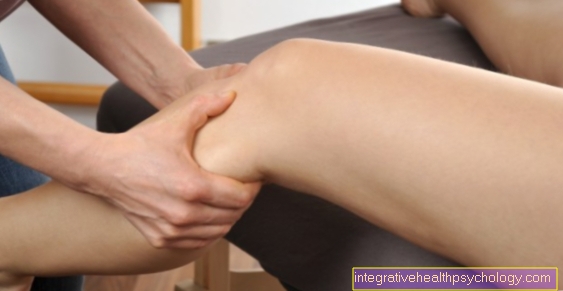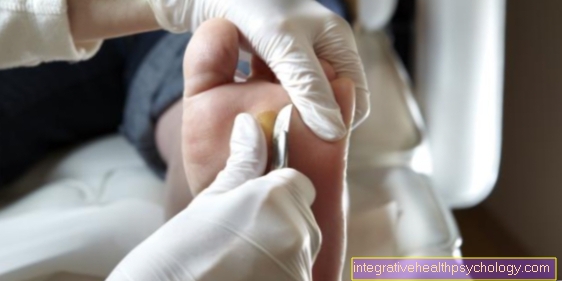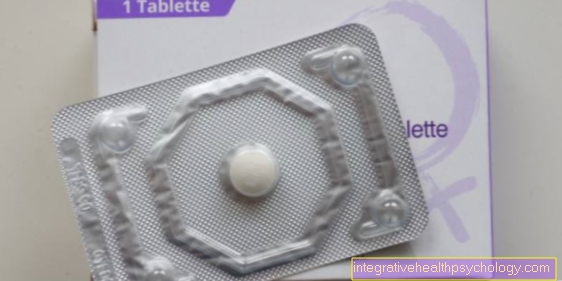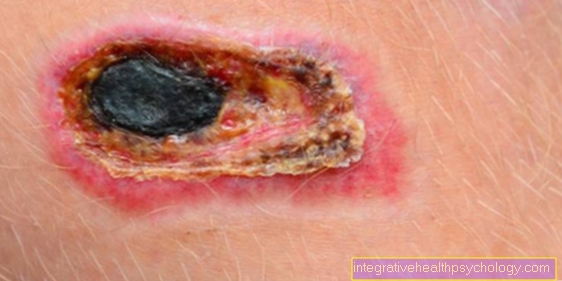U5 investigation
What is the U5?
The U5 examination is one of the early diagnosis examinations in children and adolescents.
It is performed between the ages of six and seven months. During this period, the interaction between parents and child continues to increase. The doctor checks the child's physical and mental development and dexterity, and assesses their vision and hearing.
In addition, the second part of the recommended multiple vaccination against tetanus, diphtheria, polio, pertussis, Haemophilus influenzae, hepatitis B and pneumococci is due for U5.
As part of the U5, the child's level of development should be ascertained and compared with that of children of the same age in order to identify any residues at an early stage and to counteract them as quickly as possible.
You might also be interested in: U examinations

When will the U5 take place?
As part of the recommended preventive check-ups, the U5 is carried out by the treating pediatrician after the first 4 check-ups on average at the age of six to seven months.
Which examinations are carried out?
During the U5, as with the other preventive medical examinations in childhood, special attention is paid to the physical examination:
- After measuring height, weight and head circumference, the doctor can assess the findings as a whole to determine whether the physical development is age-appropriate.
- To assess motor skills, coordination and attention, the doctor tries to do gymnastics exercises with the child in a playful way and to test the reflexes. With the U5, the children can usually turn on their stomachs independently and roll forward to reach their desired toy.
- Hand-mouth coordination is checked by holding a toy out to the child. At that age, they should reach for it carefully and put the toy in their mouth.
- The foot-grip reflex is still present. In addition, the propping reaction is checked. The baby takes its head with it when its arms are pulled up, so that it can support the fall with its arms to the side if it falls from the previously unstable, sitting position.
- Various postural reactions of the child are also checked.
Various objects are used to assess the ability to see and hear:
- With the help of switching a lamp on and off, it can be assessed whether the child is already fixing things and can follow them. The eyes should move in parallel.
- Hearing is tested with the help of a bell. If the child turns towards the source of the noise, it has already passed the test. If this reaction does not occur, a more extensive hearing test should be carried out.
You might also be interested in: Growth spurt
How does the U5 work?
The process of the U5 examination is clearly structured so that no essential examination for a comprehensive assessment of the child's level of development is forgotten.
First of all, the treating pediatrician conducts a detailed discussion with the parents about the current level of development, the eating and sleeping behavior of the child, as well as the medical history. This is followed by a structured, extensive physical examination. In addition to checking vital organs such as the heart and lungs, the abdominal and genital regions are also inspected.
Subsequently, during the U5, the child's reflexes are checked and the doctor tries to get a picture of their eyesight and hearing through play.
Ultrasound of the internal organs can be requested as an optional service. However, the parents usually have to bear the costs themselves.
Not always pleasant for the child, but necessary, at the end of the U5 is the booster of the multiple vaccination. At the end of the day there is usually still the possibility that the doctor can answer the parents' questions and give tips on dealing with everyday problems.
You might also be interested in: Vaccinations in the baby
Does my child have to go to U5?
The U5, like the other U examinations in children and adolescents, is one of the state-recommended early diagnosis examinations in order to check the physical and mental development of the children at regular intervals and to identify and treat any delays at an early stage. However, the U-examinations are not required by law.
In some federal states, parents are written to for each upcoming U-examination of their child and have to send the health department a signed proof. If this does not happen, parents do not have to fear any legal consequences. However, you will be asked again and it may happen that the health department passes on the information about the not performed U-examination to other offices.
The following topic may also be of interest to you: Should I have my baby vaccinated?
What happens if I go to U5 with my child?
If you go to the pediatrician for a U5 examination with your child, in addition to a detailed discussion with the parents about the child's level of development, great importance is attached to an extensive physical examination. In addition, important body measurements such as weight, height and head circumference are determined.
In order to get a comprehensive overview, the doctor tries to playfully check the reflexes and test the mobility and coordination. In addition, the ability to see and hear is assessed in a playful way and then a comprehensive assessment is carried out by looking at all the examination results. In addition, the multiple vaccinations will be boosted.
It continues with the further investigations. Read more about this under: U6 examination - you should pay attention to this!
Who bears the costs of the U5?
As part of the state preventive medical examinations, the U-examinations for children are also part of the standard benefits that are covered by private and statutory health insurances. The parents only have to pay if the period in which the examinations are to take place is not observed. In the context of the U5, this means that the examination must be carried out between the sixth and seventh month of life. So that there are no costs, parents should make an appointment early.
The U1-U7, as well as the U8, U9 and J1 are standard benefits for both statutory and private health insurances. The newly added U-examinations, such as the U7a, U10, U11 and J2, are not accepted by everyone. In addition, an ultrasound of the organs can be carried out voluntarily at U5, the costs of which, however, are not covered by the flat rate of the health insurance and must be borne by the parents themselves.
You can find more baby-related topics here: When does a baby crawl? - You should know that!
How long does the U5 take?
The duration of the U5 examination can vary depending on the child and the treating pediatrician. As a rule, a period of 15 to 25 minutes is planned for the preventive check-ups in a pediatrician’s practice.
In addition to a detailed physical examination, the doctor should be given enough time to observe the child's behavior in order to be able to subsequently assess the physical and mental development. In addition, there should be enough time to clarify the parents' questions and to have problems or worries explained.
Depending on how long the doctor needs, such a check-up can sometimes take longer than half an hour.


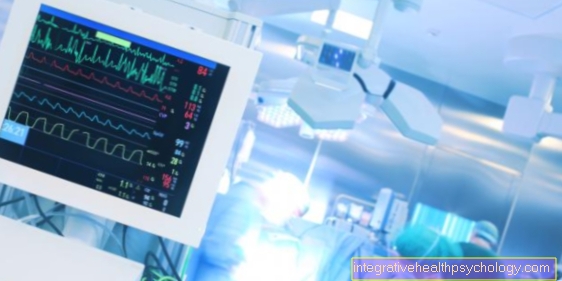






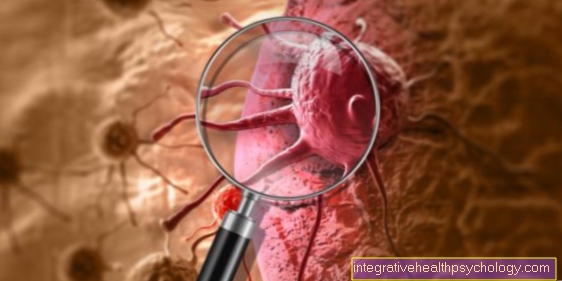



.jpg)




